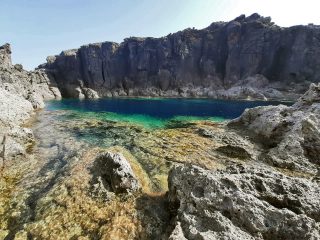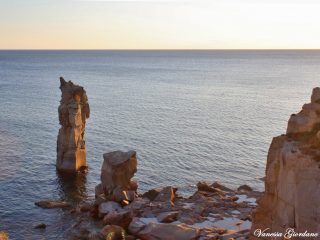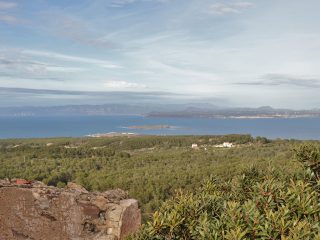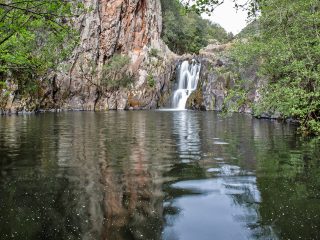The State-owned Montes Forest lies in the municipality of Orgosolo and extends across a surface area of around 4,586 hectares. It spreads across Supramonte, from the first buttresses of the Gennargentu massif, to the high valley of the Cedrino, as far as the rio Flumineddu, which is its eastern border.
The forestry area has typically Mediterranean climatic conditions with rainfall mainly in the autumn-winter period.
From a geological point of view, the area mainly consists of Mesozoic limestone. These show particular signs of erosion thanks also to the presence of surface water and numerous springs. Some of the most important ones include the Funtana Bona spring from where the flow of the River Cedrino begins.
The flora is dominated by the presence of holm oak. Indeed, the forest hosts a holm oak wood spanning back centuries, known as Sas Baddes, and considered one of a kind in the Mediterranean for size and characteristics. It covers around 1,000 hectares with trees standing 20-25 metres tall, a jewel in the crown of the state-owned forest and one of the oldest and largest holm oak woods in Europe. The forest is also home to maple, holly, strawberry trees, phillyrea and English yew. Peonies and wild roses of the Gennargentu pop up from the undergrowth.
The forest is a protective oasis for fauna and home to a number of species. The mouflon is considered symbol of Montes having slotted in perfectly with the forest’s habitat. The most commonly encountered species is the boar, as is clear from the numerous “plowings” which they leave in their trail. The forest is also home to the wild cat, the marten, the garden dormouse and the dormouse. The outskirts of the forest, on the other hand, are home to the hare, the wild rabbit and the fox.
The birds include the golden eagle, goshawk, common raven, Sardinian hooded crow, peregrine falcon, kestrel, sparrowhawk, partridge and wood pigeon.
Walking through the forest, you can admire a number of significant nature elements such as the natural monument of Monte Novo San Giovanni. This can be reached along an ancient road and offers a view of 70-metre peaks, where different endemic floral varieties grow.
Still famous to this day is Campu su Mudrecu, an almost bare karstic plateau due to a fire which destroyed an entire juniper forest in the 1930s. It is easy to catch a glimpse of large herds of mouflons here.
Campu su Disterru, an extensive karstic plateau partly covered by a centuries-old holm oak forest, where the karstic chasm of the same name can be found and with an oval-shaped opening.
In the areas near the springs, it is easy to find sheep pens characterised by “pinnetos”, shepherds’ shelters built with stone and cone-shaped roof made with branches. Ruins from the Nuragic age are also visible: the village of sas Baddes, part of the holm oak wood, two tombs of giants, near the sa Senepida valley, and, at the heart of the forest, the Mereu Nuraghe, built using blocks of white limestone.
The entire area of the complex falls within a protected area pursuant to Royal Decree no. 3267/1923 and Law 991/52 and was declared a permanently protected fauna oasis in a decree from the Environmental Protection Department 139/79 and part of the area of the Site of Community Importance (SCI) “Supramonte di Oliena, Orgosolo e Urzulei – Su Sercone” (ITB002212).





















